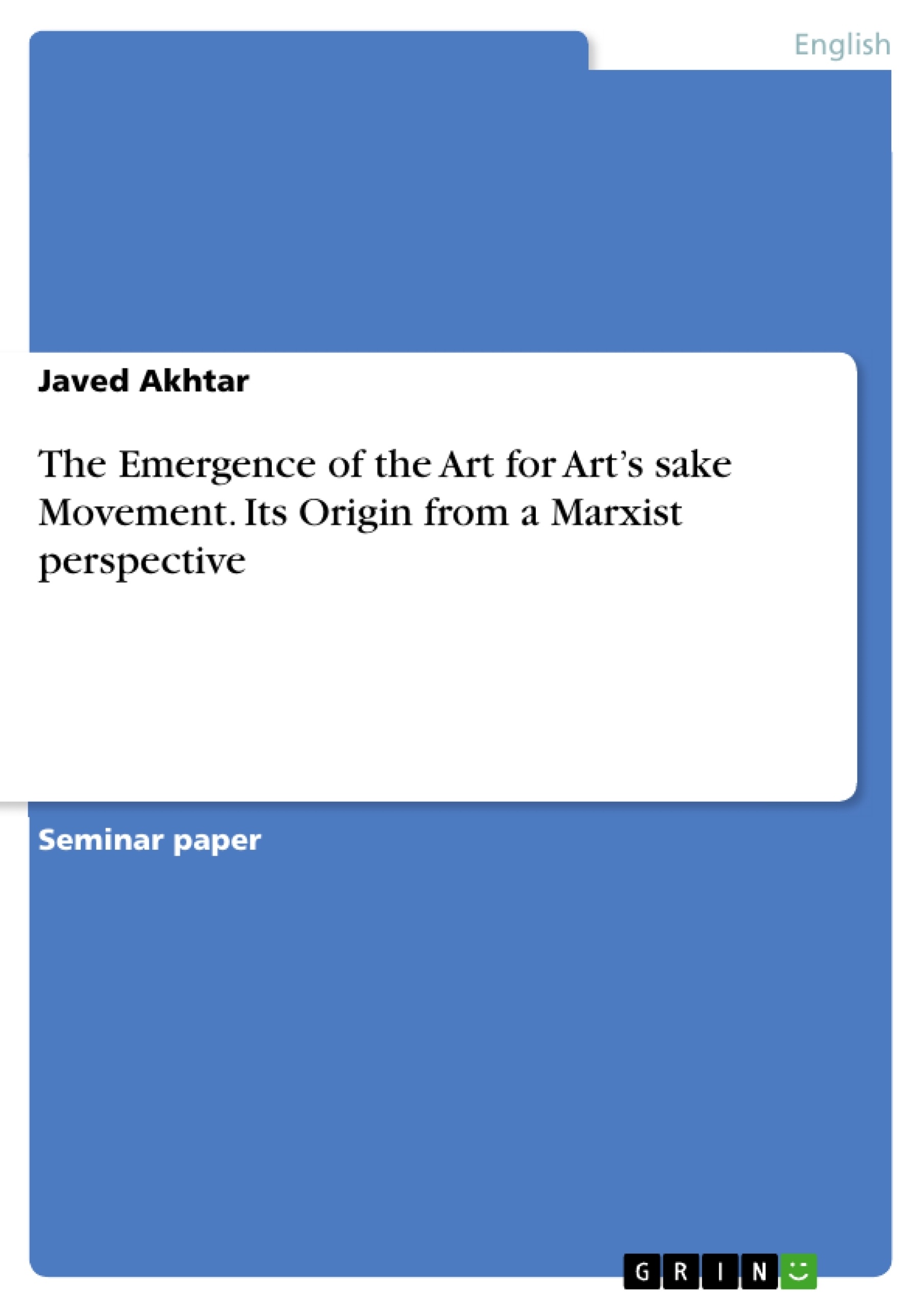The aim of this research paper is to trace the origin and development of Art for art’s sake movement from Marxist perspective. The origin of Art for art’s movement can be traced back to the late Romanticists who felt themselves misfit in the post-revolutionary bourgeois world of business, profit and industrialisation of the Patriarchal countryside of Europe. Therefore, an insoluble contradiction occurred between the aims of the late Romanticist artists and writers and the conditions of the Post-revolutionary bourgeois capitalist world. However, they became hostile to it, but failed to see any hope of changing it.
The employment of Marxist literary hermeneutics in analysing Art for art’s sake movement yields the result that the apostles of this movement express their disharmony with the bourgeois capitalist social formation. They refuse to be commodity producer in the bourgeois publishing industry, in which an author is a labourer or commodity producer for those consumers whom he does not see. However, the apostles of this movement failed to introduce new modes of literary production as well as to change the bourgeois social formation. The present research study highlights the purpose, rise and fall of Art for art’s sake movement in an innovative Marxist perspective.
Table of Contents
- Abstract
- Introduction
- Literature Review
- Discussion
Objectives and Key Themes
This research paper aims to investigate the origin and development of the Art for art's sake movement from a Marxist perspective, exploring its historical context, key figures, and its relationship to the social and economic conditions of the time.
- The emergence of Art for art's sake as a reaction against the bourgeois capitalist social formation
- The movement's rejection of utilitarian art and its emphasis on aesthetic autonomy
- The influence of Romantic and idealist philosophies on the movement's development
- The impact of the movement on literary production and the role of the artist in a capitalist society
- The limitations of the Art for art's sake movement in terms of its social and political impact
Chapter Summaries
- Abstract: This section provides an overview of the research paper's objectives, methodology, and key findings. It outlines the Marxist perspective used to analyze the Art for art's sake movement and highlights the movement's origins, key figures, and its relationship to the bourgeois capitalist social formation.
- Introduction: This chapter delves into the historical context of the Art for art's sake movement, situating it within the broader social and economic transformations of the post-revolutionary bourgeois world. It examines the movement's roots in Romanticism and its rejection of the utilitarian values of the rising bourgeois class.
- Literature Review: This chapter reviews existing scholarship on the Art for art's sake movement, exploring both traditional and Marxist interpretations. It highlights key figures and works that have contributed to the understanding of the movement's origins and development.
- Discussion: This section presents a detailed analysis of the Art for art's sake movement through a Marxist lens. It examines the movement's key tenets, its philosophical underpinnings, and its impact on literary production and artistic practice.
Keywords
The key terms and concepts explored in this research paper include: Art for art's sake, aesthetic autonomy, idealism, bourgeois capitalist social formation, utilitarian art, Marxist literary theory, modes of literary production, and the role of the artist in society.
- Citar trabajo
- Assistant Professor Javed Akhtar (Autor), 2017, The Emergence of the Art for Art’s sake Movement. Its Origin from a Marxist perspective, Múnich, GRIN Verlag, https://www.grin.com/document/354277




